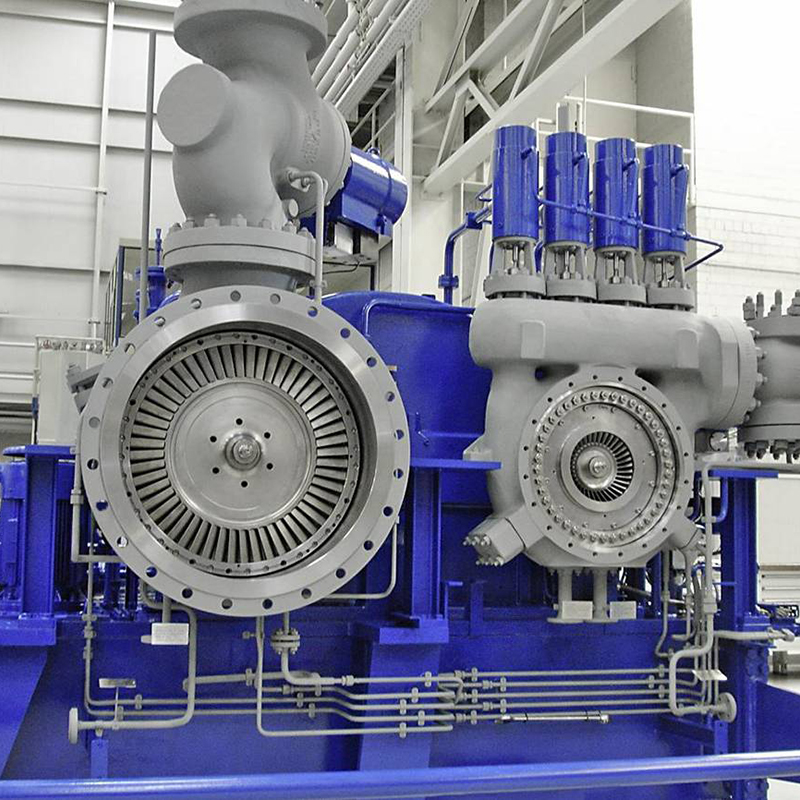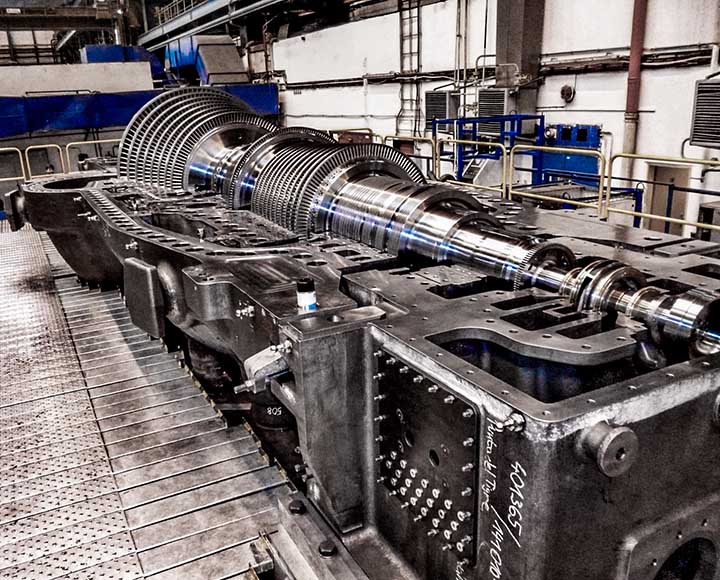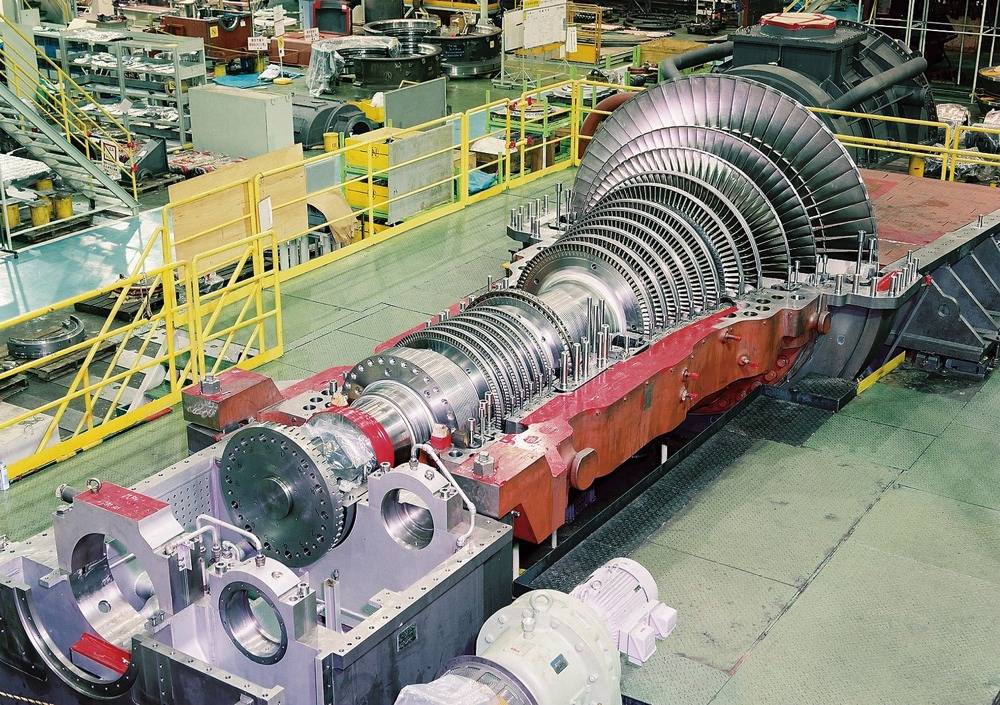OEM vs NON-OEM - SPARE PARTS - SPECIAL STEAM TURBINES

LIMITS IN ENGINEERING & DESIGN ABOUT OEM vs NON-OEM IN SPARE PARTS
When considering the limits in engineering and design regarding the use of OEM and non-OEM spare parts in special steam turbines, it is important to address various factors that can impact reliability, maintainability, availability, safety, and the prevention of critical failures and environmental risks in power generation, oil, gas, and petrochemical industries. The following limits should be considered:
Compatibility and Fit:
- One of the primary concerns with non-OEM spare parts is ensuring compatibility and fit within the specific design and operating parameters of the special steam turbine.
- Non-OEM parts may not have been designed or engineered specifically for the turbine model, leading to potential issues with fit, alignment, and performance.
- Differences in dimensions, material specifications, and tolerances can affect the reliability and overall functioning of the turbine.
Quality and Performance:
- OEM spare parts are typically manufactured to meet stringent quality control standards, ensuring reliability, performance, and adherence to industry regulations.
- Non-OEM parts may vary in terms of quality and performance due to differences in manufacturing processes, materials used, and quality control measures.
- Inadequate quality can lead to premature failures, decreased efficiency, increased maintenance requirements, and safety risks.
Warranty and Support:
- OEM spare parts often come with warranty coverage and comprehensive support services.
- Non-OEM suppliers may not offer the same level of warranty coverage or access to technical support, which can impact reliability and the ability to resolve issues promptly.
- The availability of reliable technical support and spare parts can significantly impact the maintenance and repair process, minimizing downtime and improving turbine availability.
Long-Term Support and Obsolescence:
- OEMs generally provide long-term support for their products, including spare parts availability, engineering updates, and documentation.
- Non-OEM suppliers may not have the same level of commitment to long-term support, potentially leading to challenges in obtaining replacement parts as the turbine ages or technologies change.
- Special steam turbines may have a long lifespan, and ensuring ongoing access to compatible spare parts is essential for maintaining reliability and availability.
Safety and Regulatory Compliance:
- OEM spare parts are designed and manufactured to comply with safety standards and regulations specific to the industry.
- Non-OEM parts may not undergo the same level of rigorous testing or meet the same safety standards, posing potential safety risks and non-compliance issues.
- Adhering to safety regulations is crucial to prevent accidents, ensure worker safety, and minimize environmental risks associated with turbine operations.
Performance Guarantees:
- OEM spare parts often come with performance guarantees, ensuring that they meet specified performance criteria.
- Non-OEM parts may lack performance guarantees, making it challenging to ensure optimal turbine performance and efficiency.
- Reliable and efficient turbine performance is crucial for power generation, oil, gas, and petrochemical operations, and non-OEM parts may introduce uncertainties in achieving desired performance levels.
System Integration and Optimization:
- OEM spare parts are typically designed to integrate seamlessly within the turbine system, considering factors such as aerodynamics, heat transfer, and mechanical interactions.
- Non-OEM parts may not undergo the same level of system integration and optimization, potentially leading to suboptimal performance or compatibility issues.
- Proper integration and optimization of spare parts are essential for maximizing turbine efficiency, reliability, and safety.
To mitigate the limitations associated with the use of OEM and non-OEM spare parts in special steam turbines and improve reliability, maintainability, availability, safety, and prevent critical failures and environmental risks in the power generation, oil, gas, and petrochemical industries, the following strategies can be implemented:
Thorough Evaluation and Selection Process:
- Establish a rigorous evaluation process for selecting spare parts, considering both OEM and non-OEM options.
- Conduct thorough assessments of non-OEM suppliers, including their reputation, track record, quality control processes, and ability to meet performance requirements.
- Prioritize suppliers that demonstrate a commitment to quality, compliance with industry standards, and long-term support.
Quality Control and Testing:
- Implement stringent quality control procedures for both OEM and non-OEM spare parts.
- Conduct thorough inspections and testing to ensure compliance with specifications, performance requirements, and safety standards.
- Establish clear acceptance criteria for all spare parts and conduct regular audits to verify adherence to quality standards.
Collaboration and Partnerships:
- Develop collaborative partnerships with OEM suppliers to ensure access to genuine spare parts and technical support.
- Engage in open communication channels with non-OEM suppliers to discuss requirements, specifications, and performance expectations.
- Foster relationships with suppliers who demonstrate a commitment to ongoing support, including spare parts availability and access to technical expertise.
Compliance and Safety:
- Prioritize safety and compliance by following industry regulations, standards, and guidelines for spare parts selection and usage.
- Ensure that both OEM and non-OEM parts meet the necessary safety certifications and comply with relevant environmental regulations.
- Regularly review and update safety protocols and procedures to address any specific risks associated with non-OEM parts.
Long-Term Support and Obsolescence Management:
- Consider the long-term support and obsolescence management aspects when selecting non-OEM spare parts.
- Evaluate suppliers’ capabilities in providing ongoing support, including spare parts availability, engineering updates, and documentation, throughout the lifecycle of the steam turbine.
- Establish contingency plans and alternative sourcing options to mitigate risks associated with the potential unavailability of non-OEM parts in the future.
Performance Monitoring and Analysis:
- Implement a comprehensive performance monitoring system to track the performance of both OEM and non-OEM spare parts.
- Regularly analyze data on failure rates, maintenance costs, and performance degradation to identify any trends or issues.
- Conduct root cause analyses for any failures or performance deviations to identify potential areas for improvement and take corrective actions.
Training and Knowledge Transfer:
- Invest in training programs for maintenance personnel to enhance their understanding of the unique characteristics and considerations associated with OEM and non-OEM spare parts.
- Provide education on proper installation procedures, maintenance practices, and troubleshooting techniques specific to the special steam turbines.
- Foster a culture of knowledge sharing within the organization to facilitate continuous learning and improvement.
Documentation and Record-Keeping:
- Maintain comprehensive documentation and records of all spare parts, including specifications, certifications, maintenance history, and performance data.
- Implement a centralized database or system to store and retrieve this information easily.
- Regularly review and update the documentation to ensure accuracy and relevance.
WHY, WHEN, WHERE, WHAT, WHICH, HOW TO APPLY ENGINEERING IN SPARE PARTS ABOUT OEM vs NON-OEM
When considering the use of OEM vs. non-OEM spare parts in special steam turbines to improve reliability, maintainability, availability, safety, and mitigate critical failures and environmental risks in existing plants and new projects in the power generation, oil, gas, and petrochemical industries, it is important to address the following aspects:
WHY:
- The choice between OEM and non-OEM spare parts can impact the overall performance, reliability, and safety of special steam turbines.
- Optimal spare parts selection is crucial to ensure efficient operation, minimize downtime, and prevent critical failures that can lead to safety risks and environmental hazards.
WHEN:
- The decision to use OEM or non-OEM spare parts should be made during the procurement and maintenance phases of special steam turbines.
- It is essential to consider the specific needs, requirements, and lifecycle stage of the turbines when determining the most suitable spare parts option.
WHERE:
- The choice between OEM and non-OEM spare parts is relevant in both existing plants and new projects in the power generation, oil, gas, and petrochemical industries.
- It applies to various components of special steam turbines, including blades, seals, bearings, valves, and control systems.
WHAT:
- OEM spare parts are produced by the original equipment manufacturer, ensuring compatibility, quality, and adherence to design specifications.
- Non-OEM spare parts are manufactured by third-party suppliers and may offer cost advantages but require thorough evaluation to ensure compatibility and performance.
WHICH:
- The selection of OEM or non-OEM spare parts depends on factors such as the turbine’s age, warranty considerations, availability of OEM parts, cost-benefit analysis, and performance requirements.
- Critical components or those affecting safety and environmental risks may prioritize the use of OEM parts.
HOW TO APPLY:
- Perform a comprehensive analysis of the turbine’s needs, including spare parts requirements, performance expectations, and safety considerations.
- Evaluate the availability, quality, and cost-effectiveness of both OEM and non-OEM options.
- Engage in collaboration and communication with OEM suppliers to ensure access to genuine spare parts and technical support.
- Establish rigorous evaluation criteria for non-OEM suppliers, considering factors such as reputation, quality control processes, and compliance with industry standards.
- Implement quality control procedures and testing to verify the compatibility, performance, and safety of both OEM and non-OEM spare parts.
- Develop a long-term support and obsolescence management strategy to address the availability of spare parts over the turbine’s lifecycle.
- Regularly monitor performance, conduct analysis, and maintain documentation to track the reliability, maintainability, and safety of the spare parts used.

PROCEDURES, ACTIONS, STUDIES, MITIGATION, RECOMMENDATIONS TO APPLY ENGINEERING & DESIGN IN SPARE PARTS OEM vs NON-OEM
To effectively apply OEM and non-OEM spare parts in special steam turbines and improve reliability, maintainability, availability, safety, and mitigate critical failures and environmental risks in existing plants and new projects in the power generation, oil, gas, and petrochemical industries, the following procedures, actions, studies, mitigation measures, and recommendations can be considered:
PROCEDURES: a. Conduct a comprehensive inventory and assessment of spare parts needs for special steam turbines, including identification of critical components. b. Define procurement and sourcing procedures that specify the requirements for OEM and non-OEM spare parts, including quality standards, certifications, and compatibility checks. c. Establish a robust documentation system to track spare parts information, including part numbers, specifications, performance records, and maintenance history. d. Implement a systematic approach to spare parts management, including inventory control, obsolescence management, and lifecycle planning.
ACTIONS: a. Engage in proactive communication and collaboration with OEM suppliers to ensure access to genuine spare parts, technical support, and updated product information. b. Develop relationships with reputable non-OEM suppliers through a thorough evaluation process, considering factors such as their track record, quality control procedures, and compliance with industry standards. c. Conduct regular inspections, testing, and analysis of both OEM and non-OEM spare parts to verify their compatibility, performance, and safety. d. Implement a preventive maintenance program that includes regular inspections, replacements, and upgrades of spare parts to prevent critical failures and extend the turbine’s lifespan. e. Train and educate maintenance personnel on the proper installation, maintenance, and troubleshooting procedures for both OEM and non-OEM spare parts.
STUDIES: a. Perform comparative studies between OEM and non-OEM spare parts in terms of their performance, reliability, cost-effectiveness, and environmental impact. b. Conduct failure analysis studies to identify common failure modes and root causes associated with different spare parts options, helping to inform decision-making and risk mitigation strategies. c. Evaluate the long-term performance and reliability of both OEM and non-OEM spare parts through data collection, analysis, and benchmarking against industry standards and best practices.
MITIGATION: a. Develop a risk mitigation strategy that addresses potential challenges associated with using non-OEM spare parts, such as warranty considerations, compatibility issues, and limited availability. b. Establish rigorous quality control processes for non-OEM spare parts, including supplier audits, inspection procedures, and testing protocols to ensure they meet the required standards and specifications. c. Maintain a contingency plan to address unexpected shortages or delays in OEM spare parts availability, including alternative sourcing options and risk assessment.
RECOMMENDATIONS: a. Prioritize the use of OEM spare parts for critical components that directly impact safety, environmental risks, and the overall performance of special steam turbines. b. Conduct a cost-benefit analysis considering factors such as upfront cost, long-term reliability, maintenance requirements, and potential impact on safety and environmental risks. c. Regularly monitor and evaluate the performance and reliability of spare parts, taking into account feedback from operators, maintenance personnel, and industry experts. d. Foster collaboration and knowledge sharing among stakeholders, including OEM suppliers, non-OEM suppliers, turbine operators, and industry associations, to exchange best practices and lessons learned.

